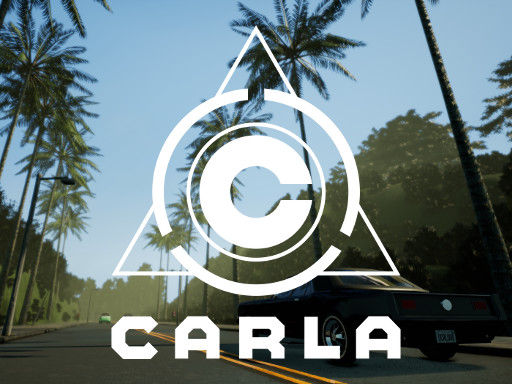AI-Generated Content
This article has been created using advanced AI technology to provide you with informative and engaging content.
AI-Curated Resources:
Sometimes, a name just sparks a bit of curiosity, doesn't it? You might hear "Carla Calvo" and wonder about the story behind it, perhaps picturing someone making a real difference in the world. Well, in some respects, names can often become linked with innovation, with ideas that push the boundaries of what's possible. This particular name, you know, could easily bring to mind something truly groundbreaking, something that's shaping how we'll move around in the future. It's a bit like a whisper of what's to come, hinting at advancements that are already here, changing things for the better.
As a matter of fact, when we talk about names that resonate with forward-thinking technology, it's almost natural to think about systems that are built to solve complex problems. This name, "Carla Calvo," in a way, brings us to the doorstep of a rather important area: the development of self-driving vehicles. It's a field that needs very careful attention, where every detail matters, and where safety is absolutely paramount. So, it makes sense that tools exist to help make sure these vehicles are as good as they can possibly be, before they ever hit real roads.
The information we have actually points us to a powerful simulation platform, also named CARLA, which is truly at the heart of this work. This system is designed from the very beginning to support the creation, teaching, and checking of autonomous driving setups. It provides a safe and controlled setting where these smart cars can learn and be tested without any real-world risks. So, while we might not be talking about a person named Carla Calvo in this instance, we are certainly talking about something that carries a similar spirit of progress and careful thought.
- Funniest Impractical Jokers Episodes
- Project X Party True Story
- Hottest Female Anime Characters
- David And Rebecca Muir Wedding
Table of Contents
- Who is Carla Calvo? Exploring the Core Idea
- Personal Details and Background - Carla Calvo
- How Does Carla Calvo Connect to Advanced Technology?
- What's New in the World of Carla Calvo's Simulation?
- Why Are Logs Important for Carla Calvo's Systems?
- Supporting Carla Calvo's Community - What Help is Available?
- Carla Calvo and the Future of Driving Development
- Getting Started with Carla Calvo's Tools
- Finding Your Way with Carla Calvo's Rental Options
Who is Carla Calvo? Exploring the Core Idea
Sometimes, a name just pops up, and you wonder what it's all about, right? You might hear "Carla Calvo" and picture someone, or perhaps something else entirely. Well, in this case, the information we have doesn't tell us about a person's life story or personal details. What it does tell us, though, is about something called CARLA, a rather important setup that helps folks work on self-driving cars. It's almost like a digital playground, if you will, where these advanced vehicles can learn and grow without any real-world risks. The basic idea behind this CARLA system, you see, is to give people a solid base to build, teach, and check autonomous driving systems. It's built from the very beginning, with that specific purpose in mind, so everything works together pretty smoothly, it seems. This means that anyone wanting to make self-driving cars safer and smarter has a place to start, and that's actually a pretty big deal for progress.
The whole point of developing CARLA from scratch, you know, was to make sure it could really handle the serious work of making autonomous vehicles. Think about it: before a self-driving car can be trusted on real streets, it needs a lot of practice. It needs to be put through countless situations, some ordinary, some a bit tricky, to make sure it reacts correctly every single time. This is where CARLA comes in. It provides a controlled setting where developers can create these scenarios, test their car's reactions, and gather information without putting anyone in danger. It's basically a safe sandbox for innovation, allowing engineers to refine their algorithms and systems over and over again until they are truly dependable. This kind of foundational support is what helps push the entire field forward, making sure that future transportation is both clever and safe.
So, when we talk about the initial concept behind CARLA, it's about providing a really strong platform for three main things. First, there's the creation part, where new ideas for autonomous driving can be put into action and tried out. Then, there's the teaching aspect, which is where the self-driving systems get to learn from various situations, improving their responses over time. And finally, there's the checking, or validation, where everything is put to the test to confirm it works as it should. This comprehensive approach means that CARLA isn't just a simple tool; it's a complete environment designed to meet the specific needs of a very demanding area of technology. It's a truly thoughtful way to approach such an important challenge, helping to ensure that the autonomous vehicles of tomorrow are ready for anything they might encounter.
Personal Details and Background - Carla Calvo
We're often curious about the people behind great ideas, aren't we? Like your favorite author or that musician you admire. When it comes to "Carla Calvo," the details we have available don't actually include any personal information or biographical data about an individual. Therefore, we can't create a table with those kinds of specifics. What we can talk about, though, is the incredible system that shares a similar name, the CARLA simulator, and how it helps shape the future of driving. It’s a bit like getting to know a tool rather than a person, in this instance, which is perfectly fine for understanding its impact.
How Does Carla Calvo Connect to Advanced Technology?
You might be wondering, then, how this name, Carla Calvo, ties into some really clever tech, right? Well, it turns out that the CARLA system has been getting some truly impressive upgrades. Think about it: the way things look and feel in a virtual space can make all the difference when you're trying to make something as serious as an autonomous vehicle work properly. So, with CARLA 0.10.0, there was a pretty big step forward. They brought in these amazing technologies, Lumen and Nanite, right into the heart of CARLA’s display engine. This change means that everything you see inside the simulator looks much more real and has a lot more tiny details, which is actually very helpful for testing. It’s almost like going from watching a regular movie to seeing something in high definition, where every leaf on a tree or crack in the pavement is clearly visible. This engine update, you know, it brings a lot more to the table, making the whole experience much more convincing for anyone using it to train their smart cars.
The introduction of Lumen and Nanite into CARLA’s core display engine is a rather significant improvement for anyone working on self-driving systems. These technologies, you see, allow for incredibly realistic lighting and geometry, meaning the virtual world inside the simulator behaves much more like the real one. For instance, the way light bounces off surfaces or how shadows fall can influence how a self-driving car's sensors interpret its surroundings. If the simulation looks and acts more like reality, then the data collected by the virtual car's "eyes" and "ears" will be much closer to what it would experience on an actual road. This level of detail helps to make the training and testing process much more accurate, which is incredibly important for building safe and reliable autonomous vehicles. It’s a very thoughtful way to bridge the gap between the digital and physical worlds.
This engine upgrade, too, does more than just make things look pretty; it directly supports the goal of creating better autonomous driving systems. When the visual environment is highly detailed and realistic, it allows for more accurate testing of things like object recognition, lane keeping, and even how the car reacts to different weather conditions. Imagine trying to teach a self-driving car to spot a small obstacle on a dimly lit street if the simulation itself isn't able to show those subtle details. This kind of improvement means that the data gathered during simulation is of a much higher quality, which in turn leads to more effective training for the autonomous agents. It’s a bit like giving a student a clearer textbook, allowing them to learn more effectively. This vastly improved visual fidelity contributes directly to the reliability and safety of the self-driving cars being developed.
What's New in the World of Carla Calvo's Simulation?
So, what else has been happening to make this CARLA system, which we're associating with the name Carla Calvo, even better? There's been some really cool progress on how it talks to other important software. You can now link CARLA up with different versions of ROS2, which is a popular framework for robots, including the ones that drive themselves. We're talking about versions like Foxy, Galactic, and Humble, among others. This connection means that all the information from the simulator, like what the sensors are picking up, how the car is being controlled, and what the world around it looks like, can all be brought right into your ROS2 setups. It's like having a direct line, allowing for a much smoother way to test and develop. This kind of integration, you know, makes it so much easier for people to work on their self-driving projects, letting them see how everything behaves in a controlled setting before trying it out in the real world. It's a very practical step forward for anyone serious about this kind of work.
The ability to connect CARLA with various ROS2 versions is actually a pretty big deal for developers. ROS2, or Robot Operating System 2, is essentially a collection of tools and libraries that help people build robot applications. By integrating CARLA with it, developers can use the familiar ROS2 environment to control their virtual autonomous vehicles, process sensor data from the simulator, and even understand the virtual world's state. This means that if you're already building your self-driving car's "brain" using ROS2, you can easily plug it into CARLA for testing without having to rewrite a lot of code. It streamlines the whole workflow, allowing for quicker iteration and more focused development. This kind of
AI-Enhanced Visual Content


